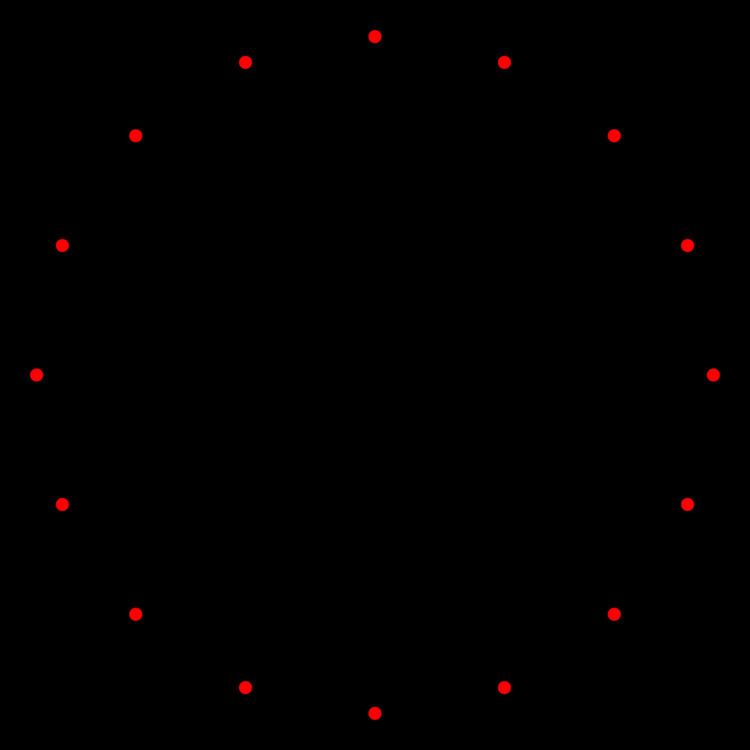 | ||
In geometry, an 8-orthoplex or 8-cross polytope is a regular 8-polytope with 16 vertices, 112 edges, 448 triangle faces, 1120 tetrahedron cells, 1792 5-cells 4-faces, 1792 5-faces, 1024 6-faces, and 256 7-faces.
Contents
It has two constructive forms, the first being regular with Schläfli symbol {36,4}, and the second with alternately labeled (checkerboarded) facets, with Schläfli symbol {3,3,3,3,3,31,1} or Coxeter symbol 511.
It is a part of an infinite family of polytopes, called cross-polytopes or orthoplexes. The dual polytope is an 8-hypercube, or octeract.
Alternate names
Construction
There are two Coxeter groups associated with the 8-cube, one regular, dual of the octeract with the C8 or [4,3,3,3,3,3,3] symmetry group, and a half symmetry with two copies of 7-simplex facets, alternating, with the D8 or [35,1,1] symmetry group.A lowest symmetry construction is based on a dual of an 8-orthotope, called an 8-fusil.
Cartesian coordinates
Cartesian coordinates for the vertices of an 8-cube, centered at the origin are
(±1,0,0,0,0,0,0,0), (0,±1,0,0,0,0,0,0), (0,0,±1,0,0,0,0,0), (0,0,0,±1,0,0,0,0),(0,0,0,0,±1,0,0,0), (0,0,0,0,0,±1,0,0), (0,0,0,0,0,0,0,±1), (0,0,0,0,0,0,0,±1)Every vertex pair is connected by an edge, except opposites.
Images
It is used in its alternated form 511 with the 8-simplex to form the 521 honeycomb.
